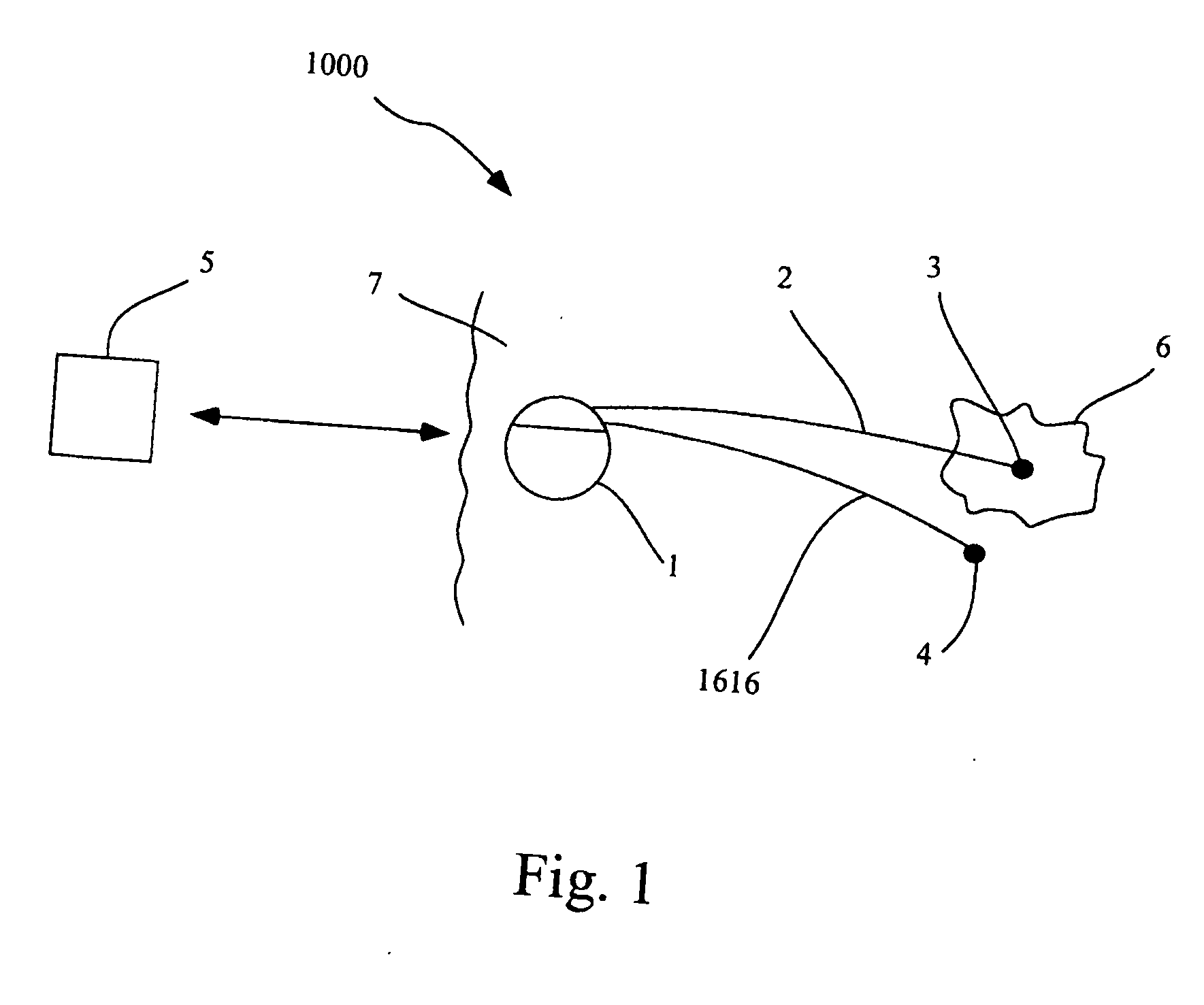Method and Device for Treating Abnormal Tissue Growth With Electrical Therapy
a technology of abnormal tissue growth and electrical therapy, which is applied in the field of electrical therapy for malignant tumors and neoplasms, can solve the problems of hospitalization and death worldwide, many of the therapies applied to cancer treatment are either ineffective or not well-tolerated by patients, and many of the medical care cost associated with cancer results from hospitalization
- Summary
- Abstract
- Description
- Claims
- Application Information
AI Technical Summary
Benefits of technology
Problems solved by technology
Method used
Image
Examples
example 1
[0296]Well known for his extensive research and subsequent publications on the topic of electromedicine, Bjorn Nordenstrom of Sweden developed a theory on the nature of bio-electricity and the healing process. He treated cancer in his patients as clinical proof of his theories. His model of control systems was named “biologically closed electric circuits” (BCEC) and sought to explain structural development in tissue injury and particularly around cancers. He found that treatment of cancer with DC electrodes changes the microenvironment of the cancer cells by electrophoresis of water and fat and electro-osmosis of water. The therapy that is based on this principle is called “electrochemical treatment” (ECT). His further experimentation showed that direct current ionizes tissue (as does ionizing radiation). Ionization of tissue via direct electrodes affected normal and malignant tissue differently. Low energy levels built up the therapeutic dose of energy from the inside of the tumor....
example 2
[0300]Habal and Schauble noted in their 1977 paper (An implantable DC power unit for control of experimental tumor growth in hamsters. Medical Instrumentation 7: 305-306 (1977)), incorporated herein by reference, that the study of electrometrics in living organisms revealed the presence of an electropotential difference between non-cancerous organs and tissue and cancerous organs and tissues. Non-cancerous organs were found to be electropositive in both healthy and tumor-bearing animals, while tumors were found to be electronegative. Human tumors from surgical specimens were also found to be more electronegative than normal tissue.
[0301]In their experiment, hamsters with cancerous tumors were treated with a current flow of 4.5×10−9 A. The positive electrode was placed in the cervical region at the tumor injection site, and the negative electrode was positioned on the dorsum of the hamsters. There was a marked decrease in tumor volume and the number of metastases in the experimental ...
example 3
[0303]Xin et al. published the results of treatment of 386 patients with middle and late-stage lung cancer in Electrochemical treatment of lung cancer. Bioelectromagnetics 18:8-13 (1997), herein incorporated by reference. According to the therapeutic regimen, cancerous tumors were treated with a voltage of 6-8 V, a current of 80-100 mA, and an electric charge of 100 coulombs per cm of tumor diameter via anode and cathode platinum electrodes which were inserted transcutaneously or intraoperatively into the tumor mass. Generally, anodes were placed in the tumor center and cathodes in the tumor periphery less than 2 cm from the tumor boundary in order to protect the normal (non-cancerous) tissue from electrical damage, edema, and chemical changes produced by the reaction near the cathodes. The short term effective rate was 72% (278 cases) and the 5 year survival rate was 29.5%.
[0304]The authors comment that the effect of ECT with lower current (40-60 mA) and longer duration (2-2.5 hour...
PUM
 Login to View More
Login to View More Abstract
Description
Claims
Application Information
 Login to View More
Login to View More - R&D
- Intellectual Property
- Life Sciences
- Materials
- Tech Scout
- Unparalleled Data Quality
- Higher Quality Content
- 60% Fewer Hallucinations
Browse by: Latest US Patents, China's latest patents, Technical Efficacy Thesaurus, Application Domain, Technology Topic, Popular Technical Reports.
© 2025 PatSnap. All rights reserved.Legal|Privacy policy|Modern Slavery Act Transparency Statement|Sitemap|About US| Contact US: help@patsnap.com



